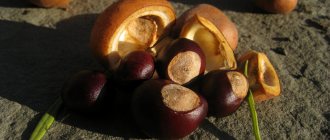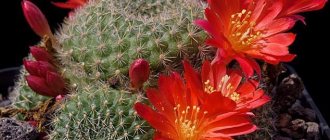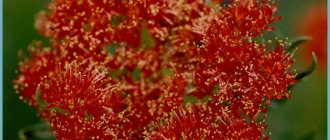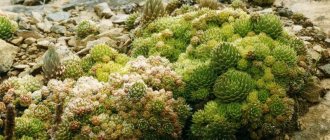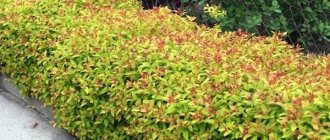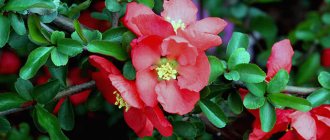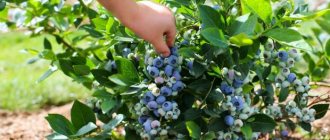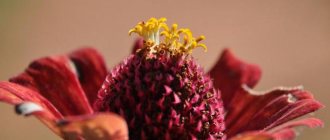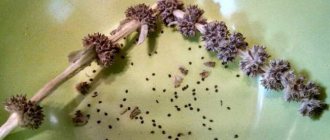Planting in open ground, growing and caring for camellia garden: photo + video
This shrub is often compared to a rose.
But its beauty is special: porcelain delicate pink flowers look sophisticated and elegant. This plant in my flower garden grows a little to the side, because next to the camellia any flower fades, and it also serves as a hedge, since it is covered with green and lush foliage all year round. This is the queen of flowers, which is impossible to pass by indifferently. I want to share information on how to grow such a miracle in your garden, and what are the requirements for this beauty.
Camellia care
Camellias grow well in humid and temperate climates. They are quite winter-hardy and can withstand frosts down to -20°C, prefer shade, and in areas with dry, hot summers - a shady location. Camellias especially like to be located next to a fence, wall or other taller crop, i.e., a support that protects from winds and bright sun.
The flowering time of the plant is unusual: autumn - winter - early spring. These are the biological characteristics of this genus: for the formation of high-quality buds and flowering of the shrub, short daylight hours and coolness are required. Comfortable air temperature for laying flower buds is 18-20 °C, for flowering – 8-12 °C.
What makes camellia garden unique?
This plant belongs to the evergreen ornamental shrubs, loved and known all over the world. You can talk for hours about the aristocratic beauty of these flowers. Romantic beauties in ancient times pinned a camellia flower to their hair or dress, and this was the best decoration for a woman.
- The plant's homeland is considered to be China and Japan, where camellia was grown not only for its amazing flowers, but also its petals were added to tea, giving it an extraordinary taste and aroma. It is thanks to its taste that the flower gained wide popularity in ancient times.
- The Philippines, Korea and southeast Asia are also familiar with this beautiful shrub. And it was brought to Europe for the first time and described in the 18th century from the Philippines by the monk Georg Joseph Kamelius. In honor of him, this plant bears this name, given later by Carl Linnaeus.
- In Germany, in a park in Dresden there are camellia bushes that are more than 2 centuries old. And they continue to bloom and delight visitors.
- Garden camellia also has a second name - Cold (Heartless) Beauty. And this name was given due to the unusual flowering period - from the second half of autumn until spring.
- The height of the bush usually does not exceed several meters and is increasingly used by gardeners and landscape designers as a hedge.
- Previously, this plant could only be grown in the southern regions, since cold winters were a difficult test for the flower (-10 is the limit for camellia). But the work of the breeders has borne fruit, and now it is possible to grow this amazing plant in more northern regions, since 25 degrees is already a completely acceptable temperature for new varieties.
- The decorative effect of the bush is expressed not only by its beautiful flowering, but also by its emerald leathery and glossy leaves, which can be quite large - up to 16 - 18 cm in length. And the elongated shape makes the shrub more impressive.
- Flowers on the bush come in a variety of shades: white, pink, red, yellow and double. New varieties may have variegated flowers. Depending on the camellia variety, the size of the flowers varies from one centimeter to 12 cm.
- Camellia blooms from autumn to spring and this differs from all plants.
- The garden beauty propagates in two ways: by seeds and cuttings.
Experts recommend that in northern regions with very cold winters, plant the bush in a tub and put it indoors for the winter.
Description of Camellia
Camellia japonica is valued for its flowers, which, depending on the variety, can be single, semi-double or double. Their shade can vary from red to pink and white, sometimes they have multi-colored stripes or spots. Camellia has no scent, but the beauty of its blooms makes up for this deficiency.
Camellia tree
In the wild, flowering lasts from January to March, but in colder climates flowers appear in late March. There are also quite a few fall flowering varieties. The fruits are spherical capsules with one or two large brown seeds with a diameter of 1-2 cm.
The evergreen, leathery, and glossy foliage makes this plant attractive throughout the season. The dried leaves can be used to make tea. They are quite aromatic and contain caffeine and catechins.
Growing Kalmia in the garden
Garden varieties are usually short and compact, but there is a tree-like form of Japanese camellia with a large spreading crown.
Popular varieties
There are such types of camellia as oilseed, Chinese, mountain. But the best varieties and hybrids known to us are obtained from Japanese camellia.
Debbie
Frost-resistant variety. This shrub grows quite quickly and looks great. Against the background of dark green shiny leaves, waxy bright crimson-pink multi-petaled flowers bloom. The plant is characterized by abundant and long flowering.
Donation
It differs from the previous variety in that the flowers are larger in size and have a double flower structure. Compared to other species and varieties, this camellia is quite unpretentious and grows a little slower than others. Recommended for growing by beginning gardeners.
Freedom Bell
The pointed, regular-shaped petals of this camellia variety seem to have been carved by a sculptor, and the scarlet color simply makes it impossible to ignore such beauty. The bush itself has straight branches and thick, shiny, large foliage of a rich green hue.
Hagoromo
This camellia grows slowly, the shape of the bush is lush and dense, and the flowers, on the contrary, are graceful and have a pure shade of white with a yellowish core, the petals seem to be porcelain.
General Colletti
This variety is distinguished by simply extraordinary flowers - red and white petals will be a bright accent and decoration of any corner of the garden or flower bed.
All these varieties remain green throughout the winter, and the flowering of each variety, although different in petal structure and shades, undoubtedly confirms another name for the camellia - Empress.
Preparing for landing
Before planting camellia in open ground, you need to carefully prepare and think through everything to the smallest detail. Let's look at a few main steps.
Selection of variety and planting material
- The best time to purchase seedlings and plant them in open ground is from the end of April to mid-July. In autumn, camellia can only be planted in the south.
- The seedlings must be four years old and have woody bark on the shoots.
- It is recommended to purchase planting material from special nurseries and stores.
- Depending on the region (southern or more northern), choose the appropriate variety.
- Before making a purchasing decision, you should carefully inspect the bush: the soil in the container should be clean and moist, and damage, dry or diseased shoots and leaves should not be allowed on the seedling.
Planting camellias in open ground
- First, you should dig a hole several times larger than the root system of the seedling along with a lump of earth.
- A drainage layer is placed at the bottom of the hole.
- The prepared substrate is poured on top as a mound.
- The seedling is carefully laid out on it, and the root is straightened out.
- The rest of the soil is poured on top, which is then compacted a little.
- The bush is well watered, and a layer of pine needle mulch is placed on top.
At first, the plant is especially protected from direct sunlight and drafts. You can come up with some temporary shading until the camellia takes root.
Reproduction and planting of camellia, or nothing is impossible
Having decided to decorate your own plot with exotic shrubs, you need to purchase a bush in a container or grow it yourself. This is a task that even a novice florist can cope with.
Shrub propagation: simple methods
In order to get camellia, you need to either buy or ask a neighbor for several young shoots. Camellia reproduces in 2 ways:
- Seeds. This method is labor-intensive, and the plants lose their varietal characteristics. But for the sake of experiment, you can try. To do this, the seeds need to be placed in pots 5-7 cm in diameter (substrate - peat + sand + humus), take care of watering, sufficient light and humidity. At the stage of 4 true leaves, transplant into a large container.
- By cuttings. They are cut from green young shoots (only the tops!) and rooted in the standard way. When the plant begins to grow, transplant it into containers with a capacity of 2-3 liters.
Attention! Young plants obtained by any of the methods must be grown for 4 years. To do this, the room temperature in winter should not fall below 8-10ºC.
Planting camellia: features
So, you have received the plant. We need to give it life, that is, plant it in open ground. And then don’t forget about watering, lighting and fertilizing.
In order to plant a beautiful camellia, you need:
- choose a place. The best option is a well-lit area (but one where half of the day is sun and half is shade), sheltered from the winds, that is, an area near a fence or MAF;
Camellia responds well to mulching
- pay attention to the soil. Garden camellia, unlike many other inhabitants of the site, prefers acidic soils. This can be achieved by applying special organic and mineral fertilizers;
- dig a hole that will be 2 times larger than the earthen ball of the plant. Camellia roots are fragile and delicate, so planting should be done carefully. With proper care, the bush will begin to grow in 14-21 days;
- water the plant after planting and mulch with humus, sawdust or straw. This will give the roots the necessary moisture and protect the soil from weathering;
- shade from direct sunlight during the first week of growth.
All that remains is to provide the shrub with proper care and enjoy a healthy plant!
Features of care
Caring for a bush is not difficult, the main thing is not to forget the main points. Let's look in order at what camellia needs most for adaptation after planting and good development.
Watering
To moisturize, it is necessary to prepare water that has been standing for several days. The watering schedule is moderate, there is no need to overwater the plant, but also do not allow it to become dry.
Camellias must receive nutrients to grow and bloom.
Fertilizers and fertilizers
The feeding procedure is carried out from late spring to mid-summer. Suitable for this purpose are special fertilizers for camellias or half the dose of a nutrient mixture for rhododendrons, rich in iron and boron.
Potassium and magnesium should not be included in the supplement. The solution is poured under the root. Then you need to water the plant thoroughly.
Trimming
In the spring, sanitary pruning is done - dry, diseased or broken branches are removed. Also, forming is necessary, which consists of trimming and pinching the upper parts of the camellia shoots.
How to prepare for winter
If the winters are very cold, then the Asian beauty needs to be securely wrapped and prepared for the frost. To do this, a circle of mesh is made around the bush around the perimeter of the trunk, then foliage is poured between the trunk and the circle.
The soil near the trunk is mulched with peat. Non-woven material is placed on top of the bush. The camel bush will overwinter well in such a shelter.
Reproduction methods
The shrub reproduces in the following ways:
- seeds;
- layering;
- through vaccination;
- cuttings.
The main method for plant propagation is cuttings. This procedure can be carried out from late spring to mid-summer. For this purpose, semi-lignified shoots of this year are used.
Plant cuttings are planted in soil from a mixture of earth and sand and peat, which are taken in equal proportions. In this case, the air temperature should be about 20˚C. After a few years, the plant will bloom.
Care and cultivation of camellias in the garden
Garden camellias have been compared to roses, but only blooming when all the plants are at rest, in winter.
But the similarity between the crops is limited only by the splendor and shape of the flowers; the care and cultivation of camellia in the garden is strikingly different from the agricultural practices of other ornamental shrubs. The reason for the uniqueness of camellias is the peculiarities of their growth in the wild nature of the plants’ native regions. In the humid, close to subtropical climate of south-east Asia, beautiful flowering shrubs and small camellia trees have been used for landscaping parks and palace complexes for many centuries.
In moderately hot summers and winters with slightly sub-zero temperatures, the crop thrives in open ground. But is it possible to grow and care for garden camellia outdoors in Russian conditions? See photo of saxifrage!
Features of cultivation
Camellia is rarely affected by diseases or pests, but sometimes gets sick when fungus appears on the leaves and branches. The first signs of fungal infection are yellowing or browning of leaves and their falling off. For treatment, any fungicide for shrubs or flower crops should be used.
If a spider mite appears on the leaves or aphids are found, the insects are destroyed with Fitoverm or Akarin, following the instructions on the package.
Garden camellias have been compared to roses, but only blooming when all the plants are at rest, in winter. But the similarity between the crops is limited only by the splendor and shape of the flowers; the care and cultivation of camellia in the garden is strikingly different from the agricultural practices of other ornamental shrubs.
The reason for the uniqueness of camellias is the peculiarities of their growth in the wild nature of the plants’ native regions. In the humid, close to subtropical climate of south-east Asia, beautiful flowering shrubs and small camellia trees have been used for landscaping parks and palace complexes for many centuries.
In moderately hot summers and winters with slightly sub-zero temperatures, the crop thrives in open ground. But is it possible to grow and care for garden camellia outdoors in Russian conditions? See photo of saxifrage!
History of growing and caring for camellia in the garden
In Europe, the first specimens of camellias appeared in the first half of the 18th century. Over the past years, gardeners have learned to care for the crop, and numerous varieties and hybrids have appeared:
- which have become more resistant to frost than wild species;
- with a longer flowering period;
- with corollas unique in shape, size and variety of colors.
The oldest specimens of camellias, once exported from Japan and China, can still be seen in greenhouses in Britain, in the garden of the ancient royal residence in Dresden and in parks in Spain.
And modern lovers of flowering shrubs have at their disposal garden camellias, as in the photo, with flowers reminiscent of peonies, roses of various types and even anemones. Among camellias there are trees and shrubby forms.
Plants can tolerate significant cold, but camellias are unlikely to survive at temperatures below –20 °C. The following varieties are considered the most winter-hardy today: Donation, Jury's Yellow, Debbie, Hagoromo. Flowering of these varieties is delayed until spring, but they retain vibrant green foliage even in winter.
Camellias in the garden: types (video)
It is recommended to plant fresh seeds prepared for sowing in boxes filled with nutritious soil substrate. At the phase of a couple of leaves, a pick is made. It is allowed to plant five seeds in individual containers. You should read the fact that camellias grown from seeds can lose varietal characteristics.
Conditions for caring and growing garden camellia
But even such frost-resistant plants will not be able to withstand the cold in the central zone of the country.
Therefore, here garden camellias are grown in large containers, bringing them into a cool room, on a terrace or in a greenhouse for the winter. Camellia does well in pots at a temperature of 10–15 °C. If the plant is provided with good, but diffuse lighting for 12–14 hours a day, then caring for camellia when grown in the garden will not be difficult. The shrub will gain color in a timely manner and will delight the gardener with an abundance of wonderful flowers.
In regions with milder winters, evergreen bushes provide shelter, and in the subtropical zone, garden camellias, as in the photo, from February to mid-spring are covered with many spectacular flowers up to 10 cm in diameter.
Camellias blooming in the garden can suffer not only from frost, but also from the bright winter sun, which is active in the morning.
To prevent foliage and flower petals from turning black and dying after thawing overnight, it is better to shade the plants or cover them with non-woven material at night. The same measure will help preserve shrubs if cold winter winds are frequent on the site.
Since garden camellias, in the photo, tolerate partial shade well, the crowns of garden trees can protect them from the negative influences of the environment. When selecting neighbors for ornamental crops, it is only important to take into account that camellias love acidic soil, which not all garden inhabitants like.
Camellias grow well under the cover of fences, near the walls of houses and outbuildings. With the help of supports and trellises, gardeners successfully grow climbing camellias in the garden, which, with the help of painstaking shaping, are given a flat, vertical shape.
Application in landscape design
Climbing garden camellias decorate facades, as well as small architectural forms, gazebos, verandas and terraces. Experienced domestic flower growers are very well aware of such a plant as balsam.
One of the varieties of this ornamental crop is also called “Camellia” and is similar to garden camellia in the coloring of flowers and very lush, abundant flowering.
These two different plants perfectly complement each other in the landscape and are used to create beautifully flowering and highly decorative compositions.
Since garden camellia of any type tolerates partial shade very well, you can use the crowns of garden plantings to protect against the negative effects of direct sunlight. When grown as a container outdoor crop, camellias look great in large white flower pots that are decorated in the style of Chinese vases.
We invite you to familiarize yourself with Snow guards for the roof: why are they needed, what are they, how to choose
Planting and caring for garden camellia
In addition to knowledge about the correct place to plant garden camellias and how to care for them, the gardener must understand the plant’s requirements for soil, watering and fertilizing. But the life of a crop in open ground begins with planting shrubs.
The planting hole for garden camellia is made twice as wide and deeper than the seedling’s existing earthen ball. This is done so that the plant immediately gets into the nutritious, sufficiently acidic soil that the capricious beauty needs for growth and flowering.
The soil for garden camellia, in the photo, consists of equal parts of humus, coniferous soil, high peat and sand. To acidify the soil, you can add crushed spruce or pine bark to the substrate. The selected mixture should be loose, light and structured. In this soil, camellia roots:
- will receive the required amount of air and moisture:
- will not be at risk of rotting;
- will actively grow, helping to obtain nutrition for the above-ground part of the bush.
A drainage layer is made at the bottom of the hole, prepared soil is poured on top of it so that after filling the lump placed on the bottom, the root collar of the shrub does not end up under the soil layer. In this case, planting camellias for garden care was carried out correctly. The soil surface is mulched with pine needles, sawdust, shavings or bark in order to:
- prevent moisture evaporation;
- gradually replenish the acidity of the substrate.
By autumn, the layer of mulch is increased, carefully covering the base of the camellia. This measure will help avoid damage to the bush from frost spreading through the soil and lack of snow at the beginning of winter.
To simplify the care of garden camellias, planting is carried out in late autumn or at the end of winter, when the plant has not yet begun to actively grow shoots. In this case, the bush acclimatizes well and begins to grow quickly, accepting both watering and fertilizer.
Growing correctly - 5 secrets of success
Bush Camellia is a long-day plant. This means that the development of buds (future flowers) will be ensured with more than 13 hours of daylight. They do not nest in the shade.
Japanese pink blooms profusely if a good planting site is chosen.
Planting and transplanting
Garden camellia is a plant with fragile, sensitive roots . Therefore, it is rarely transplanted. Also, the roots should never freeze, otherwise the death of the plant is guaranteed.
Beginning gardeners make another mistake - they place the point of growth too deep.
The neck of the plant, located between the roots and the trunk, is never covered with soil - even a few centimeters here can be fatal. Proper planting of garden Camellia means optimally selected soil plus good drainage.
The plant generously thanks for light and air with abundant flowering.
Transplantation is carried out at the beginning of winter , when the plant is resting. Active periods of growth 2:
- early April, lasting about 3 weeks;
- from early July until autumn.
It is not worth replanting a shrub in the growth phase - at best, it will stop growing, and at worst, it will die.
Caring for a young plant involves replanting annually, and camellias that bloom annually need to be planted in a new place every 2 years.
Tree varieties will become a real decoration of your garden.
In order for the plant to branch , shoots are pinched when transplanting. You can also prune in mid-autumn - this stimulates the growth of buds in the sinuses.
Vigorous hybrid Debbie.
Selecting the right soil mixture
The main secret to success when growing bush Camellia is the correctly selected soil composition . During plant growth, the soil mixture should be well moistened, but also provide good drainage. To do this, add a large amount of organic fertilizers to the soil, as well as gravel or sand.
Delicate petals seem to be sculpted from wax.
You will have to “improve” the garden plot or plant the camellia in a container, since it prefers acidic soilconsisting of:
- sand or crushed bark;
- vermiculite, perlite;
- peat
Semi-double variety Margaret Hertrich.
It is this composition of the mixture that will allow the roots to receive uniform moisture, and the moisture will not stagnate and the soil will be permeable to air.
Chinese camellia can be used to brew aromatic tea.
The need for fertilizers
It is not enough to plant Camellia correctly - it is also important to provide it with suitable conditions in the future. It requires fertilizers just like plants that love acidic soil .
Camelia Reticulata is already fading and covering the ground with a pink carpet.
You can also use a complex composition: sulfur + potassium + phosphorus and nitrogen components in combination with microelements (boron and molybdenum, manganese, copper and zinc, iron).
The only exceptions are calcium and magnesium - they are found in tap water, and their excess increases the pH of the soil.
Climatic conditions
Caring for garden Camellia means ensuring the right climatic conditions. There are 4 main requirements:
- The plant prefers diffused but bright light . It is advisable to place it on the western or eastern side. In the south, the flower will need shading, and in the north there will not be enough light.
- In the warm season, our pet prefers a temperature of about 23ºC . For flower buds to form, a temperature of 18-20ºC is needed, and in winter, during the flowering period, 8-10ºC.
- It is important that fresh air .
- The flower prefers a high level of humidity and suffers from excessive dryness. It benefits from spraying with soft water or placing the tub on a damp tray, and during flowering it is sprayed carefully so that water does not get on the flowers.
The standard of grace and good taste.
Watering rules
Tree-like Camellia is watered abundantly and evenly in summer . To avoid overwatering, moisten the soil when the soil above dries out.
Japanese camellias come in a wide variety of varieties.
Careful watering is needed - because in cool conditions the soil can easily turn sour. If you forget about timely watering, the flower will dry out and shed its leaves.
An increase in the level of calcium in water is poorly tolerated by the plant - to avoid growth problems, use soft water (for example, settled water).
Watering and fertilizing camellias when caring and planting in the garden
Garden camellias are fertilized from spring until the end of July.
The shrub responds well to the application of complex additives, which can be replaced by a one-time feeding of granulated bird droppings in early summer. The plant, like other inhabitants of the garden, needs water. The most abundant and frequent watering is in spring and summer, but from autumn, together with restrictions on fertilizers, they reduce soil moisture. This care measure when growing camellias in the garden stimulates the appearance of buds.
So that all the efforts spent on planting and caring for camellias in the garden are not in vain, when purchasing planting material, it is important to make sure that the selected variety is able to survive in winter conditions in the open ground. If in doubt, it makes more sense to choose a suitable container for the seedling and grow camellia as a potted crop, which will have to be moved to a cool room in the winter.
Festive camellia bloom - video
Care and conditions of detention
In indoor culture, Camellia japonica is one of the most difficult plants. At the slightest dissatisfaction with the environment, it sheds buds and sometimes leaves. The best option for its maintenance would be a bright winter garden with a fairly low air temperature in winter. But even here it will need to create a number of additional conditions.
Lighting. House camellia prefers bright diffused light with an illumination level in the range of 3000 - 3900 lux for 12 - 14 hours a day. Therefore, in winter, it needs additional lighting with phytolamps. In its absence, the plant will not bloom.
During the budding period, the camellia should not be turned relative to the light source, as there is a high probability that it will drop its buds. In summer, a non-flowering plant can be easily moved from place to place, taken out into the garden or onto the balcony; there will be no negative consequences for the tree. But when located outdoors, dark green leaves must be protected from direct sunlight, providing them with partial shade.
Temperature.
In the spring-summer period, Japanese camellia tolerates moderate temperatures in central Russia quite well. But during the formation of flower buds (late autumn - early winter), the temperature should be reduced to 5 - 6 °C, and after the first flowers appear, slightly increased, to 8 - 12 °C. It is this temperature regime that promotes long and abundant flowering.
Watering.
In winter, during the flowering period, you need to water your home camellia extremely carefully, since at low air temperatures the evaporation of moisture occurs rather slowly and the soil remains damp for a long time. Excessive watering during this period can quickly lead to acidification of the soil and the plant will die.
In summer, watering should be plentiful, but its need should be determined by the condition of the soil and watered only when the top layer dries out a little. It is extremely undesirable to overdry the soil; if there is a lack of moisture, the plant will shed its leaves.
Water the Japanese camellia with soft, well-settled water at room temperature. You can acidify it a little by adding a few grains of citric acid or a few drops of vinegar. The plant does not tolerate lime water.
Humidity.
Homemade camellia prefers high air humidity, so it is recommended to regularly spray the crown of the plant with boiled water, and keep the pots on a tray with wet pebbles or expanded clay. In summer, you can have a warm shower by first covering the soil in the pot with cellophane.
Trimming.
Although the plant is very painful to pruning, sometimes it becomes necessary. The shoots are pruned in October - November, stimulating the development of lateral branches and giving the crown a more neat appearance.
Description and photo
Camellia flowers are very beautiful, similar to roses or peonies. But, unlike them, they have no smell. Another feature is the dense, waxy-like petals. Flower color ranges from scarlet to pale pink and cream.
Camellias with white and cream colored flowers are often confused with gardenias. But their flower shape is slightly different.
The leaves are leathery and shiny, oval in shape. Japanese, mountain and olive camellias are grown in culture. Plants look like shrubs or small trees. Excellent for forming hedges. They are shaped by shearing. There are curly forms that can be used in the design of gazebos or verandas.
Variety selection
For planting, you need to choose camellia varieties that are resistant to cold and frost. It is better to take plants with already lignified stems, that is, in the third or fourth year of life. Flowering is not an obstacle to planting and replanting, as it occurs during the dormant period.
- Hagoromo is a camellia variety with white flowers.
- General Colletti has scarlet and white variegated flowers.
- Freedom Bell - densely branched, well suited for the formation of artificial hedges.
- Donation - plants with large flowers, abundant flowering and slow growth.
- Debbie is distinguished by the same abundant flowering as the previous variety, slightly smaller flowers, but it is resistant to the vagaries of the weather.
Diseases and pests
Like any plant, camellia can be affected by diseases and pests. As soon as signs of disease begin to appear or harmful insects appear on the leaves, you must act immediately. Damaged areas are treated, and in some cases even removed. If there are spider mites and aphids on the leaves, the preparations “Akarin” and “Fitoverm” are used for treatment. Camellia is an amazingly beautiful plant. Planting and caring for a plant is not as difficult as many people think. With timely care, camellia will become a real decoration of the territory.
Keywords: Flowers
Landing
For planting you need to prepare the soil. Suitable for camellias is a mixture of equal parts of humus, sand, high peat and coniferous soil. For greater acidification (acidic soil pH 4.5 is optimal for plants), spruce or pine bark is added. You can purchase a ready-made nutrient mixture for camellias at garden stores.
Planting in open ground is carried out in late autumn or early spring. The planting site must be chosen so that it is not exposed to drafts and that the plant is in partial shade. Direct rays of the sun burn camellia leaves. You can plant them next to large trees that provide shade or near the walls of buildings or fences.
The planting hole, where the earthen ball with the roots of the seedling is placed, should be twice as large and equipped with a drainage layer. The roots are covered with prepared soil, leaving the neck of the trunk above ground level. Water generously. Camellias love well-moistened soil, but do not tolerate stagnant water. After watering, the ground under the planted plant is mulched with pine needles or sawdust to better retain moisture.
The plant requires regular watering and fertilizing. It is advisable to water with soft water with a low salt content. Tap water is often highly hard. Therefore, it must first be prepared - boiled and cooled.
When watering, if it is done from a hose, you must ensure that the stream does not fall on the buds - this can cause them to fall off.
Fertilizing is carried out with complex fertilizers with microelements (iron, manganese, molybdenum, boron); they should not contain magnesium and calcium. The dosage of fertilizing is reduced by half compared to that recommended by fertilizer manufacturers. You should not feed the plants in the fall, because then it will produce young shoots that do not have sufficient stamina to withstand the oncoming cold and will die at the first frost.
To shape the bush, pruning is done in late autumn or early spring, depending on the flowering season. If garden camellia varieties are grown in open ground or in tubs with a summer flowering period, then to prevent cutting and damage to flower buds, the operation is performed in the fall.
Pests and diseases
Garden aphids and spider mites are the main pests of the crop. Spider mites spread especially quickly and dangerously when wintering in heated rooms. In this case, camellia leaves are treated (spread with a soap solution for several hours, which is then washed off with running water). In most cases (since the pest spreads quickly and in large quantities), it is necessary to use pesticides - insecticides.
Viral infection of leaves, in which they become spotted (white-green), is not dangerous. Fungal diseases can also affect these plants. This manifests itself as brown or brown spots on the foliage.
Reproduction
At home, Japanese camellia is propagated by seeds, cuttings and grafting. Seed propagation is suitable only for the original species form, since varietal characteristics with this method of propagation are rarely transmitted, or new plants acquire slightly different qualities.
To obtain the desired variety, cuttings are suitable. To do this, in July or January, small non-lignified branches 6–8 cm long with 3–5 well-developed leaves are cut from the mother plant. The prepared cuttings are planted in mini-greenhouses in a soil mixture of equal parts of peat and sand. Root formation lasts for 2 - 3 months, but, unfortunately, does not always end in success.
If it is difficult to achieve rooting of cuttings, you can try to graft the cut apical bud onto another camellia tree. But this is not such a simple method of reproduction, and in order to avoid a number of mistakes and get a successful result, it is necessary to carefully study special literature.
